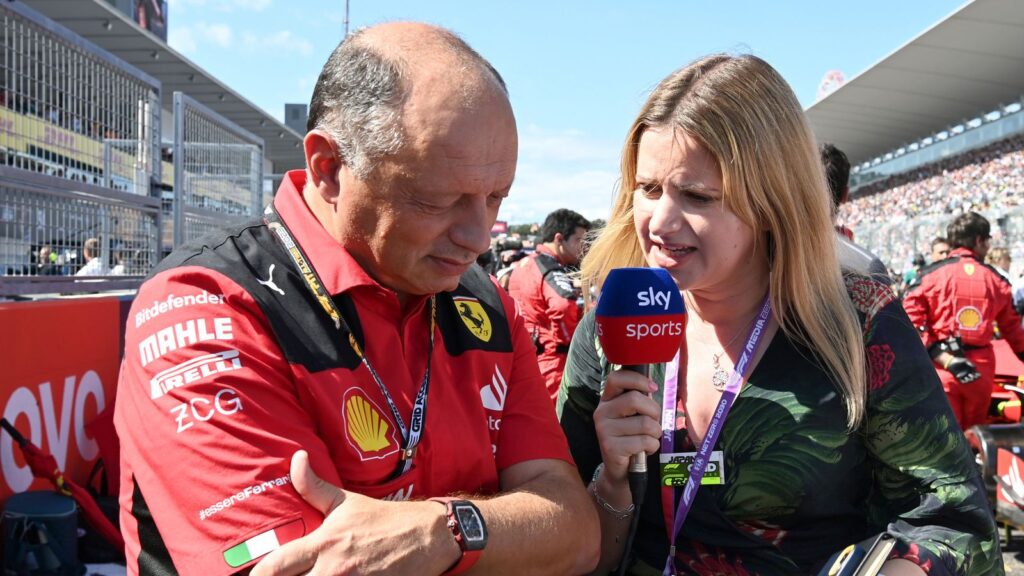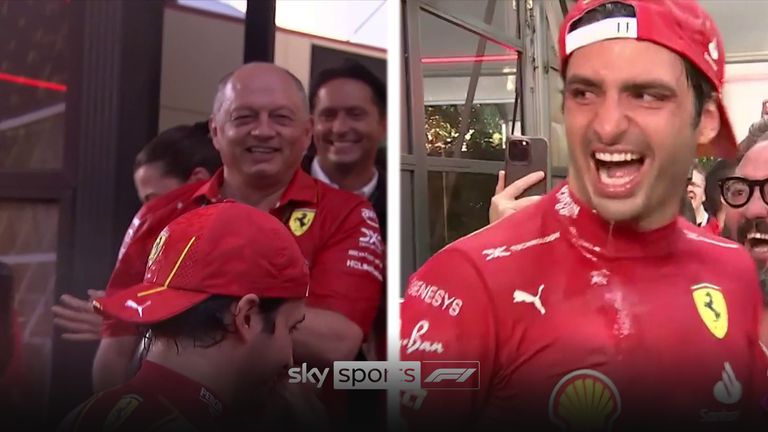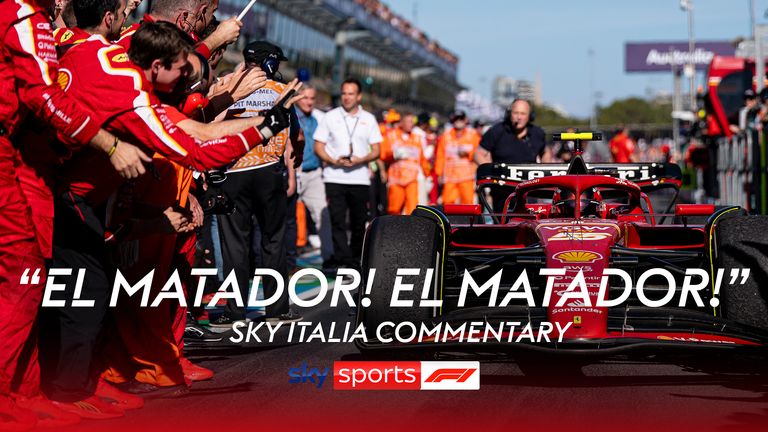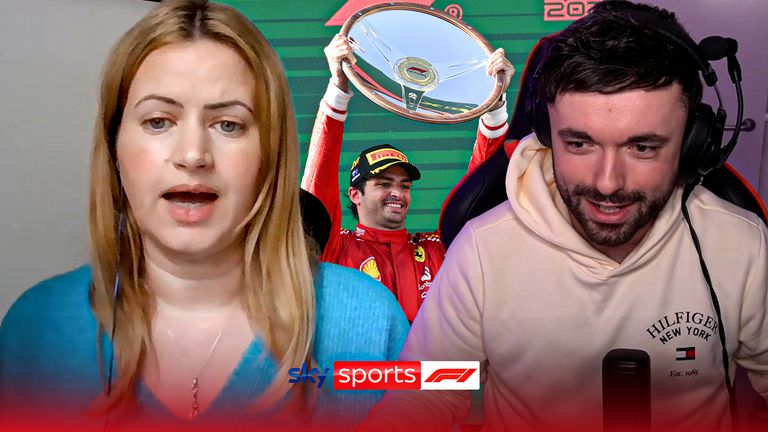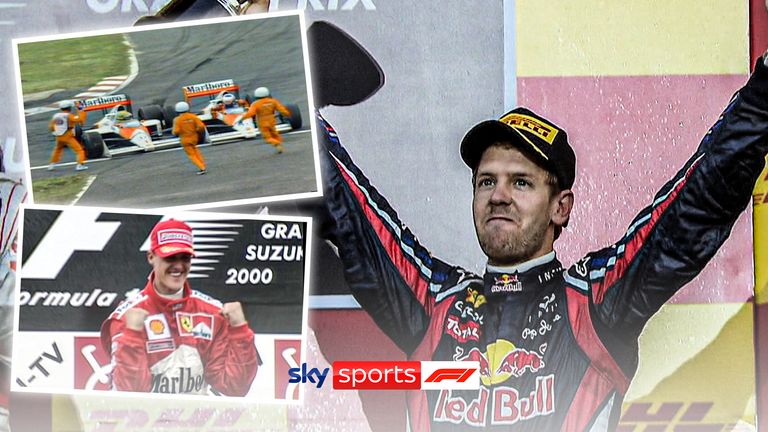As Ferrari head into this weekend’s Japanese Grand Prix on the back of an impressive one-two in Melbourne, Sky Sports F1’s Bernie Collins looks at a key area they have improved.
Red Bull started the season in ominously strong form with one-twos in Bahrain and Saudi Arabia, but Ferrari’s impressive response has created plenty of excitement as F1 returns to Japan.
Max Verstappen’s early retirement at Albert Park ensured it remained a mystery just how comparatively strong Ferrari’s pace was in Australia, but the manner of Carlos Sainz’s victory from Charles Leclerc was a clear statement of intent.
Sainz was returning from appendix surgery and ended Verstappen’s run of nine successive wins, while Leclerc beat McLaren’s Lando Norris to second place.
Ferrari have not only begun the season as Red Bull’s nearest challengers in terms of pure pace, but also appear to be operating at a high level strategically.
Norris was ahead of Leclerc in the battle for second but Ferrari outfoxed McLaren during the first round of pit stops with an undercut, where the car behind pits earlier to benefit from fresh tyres and gains enough time to be ahead when the other car emerges from its later stop.
Collins, who was head of race strategy at Aston Martin up until midway through the 2022 F1 season, has noticed an improvement in Ferrari’s efficiency…
How Ferrari have been more aggressive with strategy
Particularly in Australia when Ferrari were racing McLaren, Leclerc was behind Norris and in the past Ferrari hadn’t taken risks with strategy, whereas last week they pitted Leclerc earlier than optimum and potentially into traffic, onto a hard tyre they had not run all weekend.
It was quite an aggressive move and it paid off because they undercut Norris and that’s how they got a one-two. It was very tight between them on pace and that sort of aggression got them second.
Ferrari have been heavily criticised in the past for their strategy decisions, potentially unfairly. There have been some errors but also some good ones as well.
The errors we have seen in the past have been generally been caused by indecision. We’ve heard excerpts of team radio with drivers questioning strategy, for example under Safety Cars when reaching a swift outcome is essential.
But in the last 12 months, Canada and Las Vegas last year for example, they made very strong strategy decisions.
Since Frederic Vasseur took over as team principal at the start of last season, their approach appears to have gradually shifted to being proactive rather than reactive.
High tyre demands in Suzuka
Now for a more general look at Suzuka, one of the fastest tracks on the F1 calendar and one of the most popular among drivers.
The high-speed nature of the circuit, particularly the ‘Esses’ in Sector 1, ensures tyres are pushed hard, and due to this, Pirelli have brought their three hardest compounds.
It remains quite a significant unknown going into the weekend as to whether the optimum strategy will be a one-stopper, or two stops are favourable as they were in 2023.
Much of the mystery is due to a change of date for the race from October to April, which appears likely to result in the ambient temperature being approximately 10 degrees Celsius lower than it was for last year’s event.
One-stoppers were possible in dry races in 2017, 2018 and 2019, but a wet race in 2022 means there is a limited sample set for the latest generation of F1 cars.
The only other time we have seen the three hardest compounds used this year was in the season-opening Bahrain Grand Prix, which Red Bull dominated.
Track position crucial regardless of conditions
Not only does the forecast suggest cooler conditions, but also the possibility of heavy showers for Sunday’s race.
Whatever the conditions, track position will be critical with the fast corners making following another car difficult in dirty air, while there is just one DRS zone to aid overtaking.
This makes qualifying very important and even in the rain, you want to be up front to avoid spray and losing precious seconds behind another car, as we saw in the 2022 Japanese Grand Prix when Lewis Hamilton spent the whole race on the gearbox of Esteban Ocon.
Having two cars from the same team at the front means you can play some team games strategically, perhaps even splitting strategy if it’s not clear between a one and two-stop race.
For example, if Verstappen is running in the lead and has Leclerc then Sainz directly behind him, Ferrari can use one car to try to undercut the Red Bull, which is powerful around Suzuka, and then the other driver can go long.
Sky Sports F1’s live Japanese GP schedule
Thursday April 4
4.30am: Drivers’ press conference
Friday April 5
3am: Japanese GP Practice One (session starts at 3.30am)*
6.45am: Japanese GP Practice Two (session starts at 7am)*
8.15am: The F1 Show*
10am: Japanese GP Practice One replay
11.30am: Japanese GP Practice Two replay
Saturday April 6
3.15am: Japanese GP Practice Three (session starts at 3.30am)*
6am: Japanese GP Qualifying build-up*
7am: Japanese GP Qualifying*
9am: Ted’s Qualifying Notebook*
9.30am: Japanese GP Qualifying replay
Sunday April 7
5am: Grand Prix Sunday Japanese GP build-up*
6am: The JAPANESE GRAND PRIX*
8am: Chequered Flag: Japanese GP reaction*
9am: Ted’s Notebook*
9.30am: Japanese Grand Prix highlights*
10.30am: Japanese Grand Prix replay
*also live on Sky Sports Main Event
Formula 1’s biggest ever season continues with the Japanese Grand Prix, live on Sky Sports F1 this weekend. Stream every F1 race and more with a NOW Sports Month Membership – No contract, cancel anytime
Get Sky Sports on WhatsApp!
You can now start receiving messages and alerts for the latest breaking sports news, analysis, in-depth features and videos from our dedicated WhatsApp channel!




